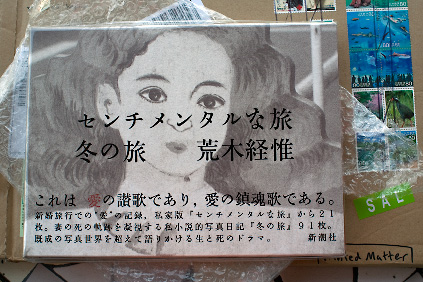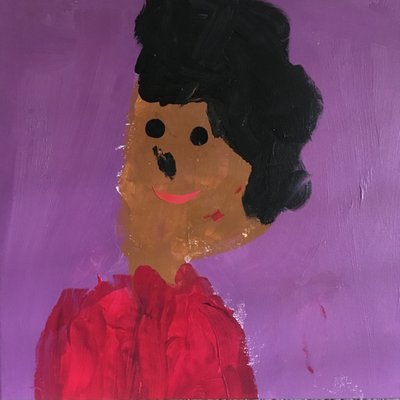Sentimental Journey, Winter Journey
22 July 2009, early morning

My copy of Sentimental Journey, Winter Journey arrived yesterday. It was leaning against the door to our condo when Shima and I arrived home. I honestly wasn’t completely sure it would make it to me.
Nobuyoshi Araki is one of Japan’s most infamous photographers. I first saw his work in a Phaidon book Martha bought me, which collected together photographs of some of the best photographers in the world. Araki was featured. The photographs Phaidon picked to showcase were the sorts of photos he is most well known for: nudes and Japanese rope bondage. I had mixed feelings about Araki for a long time. In my mind he was little more than a pornographer. Some of his photos were interesting, but many really didn’t seem particularly good, especially outside of the contexts of the books they were made for. I think my opinions of his work changed after I watched Arakimentari, a documentary about the man. In the film, a reasonable amount of time is spent discussing Sentimental Journey, Winter Journey.
The book is split into two sections. The first section features a selection of photographs from a book Araki made on his honeymoon with his wife Yoko, called Sentimental Journey. (This book is incredibly rare. Apparently it was self-published, and only 1000 copies made.) This section is predominently filled with photos of Araki’s wife, clothed and unclothed, before the two have had sex or after. (Ruffled sheets and other elements in a scene hint at what has transpired between two photos.) The next section of the book is quite different. The Winter Journey is about the death of Araki’s wife in 1990 to cancer. The photographs are unlike anything else i’ve seen by Araki. Photographs are all marked with the date, and look like they were shot with some cheap consumer camera. There is a snapshot aesthetic to them all. Many of the photos are of the skyline or his wife’s cat. It’s very repetitive, and gives one the feeling of being on a forced march. We see photos leading up to Yoko’s death, of her death, and Araki’s life after her death. The last photo is both brilliant and simple. What’s impressive about this portion of the book is that the photos aren’t technically good at all, but when taken as a body of work they become something stunning.
I bought this book from Japan Exposure for Â¥3,990 plus shipping. The shipping was expensive, but compared to the prices I was seeing for the book in North America it was a steal. (One reason I didn’t expect to get the book was because I thought the price was a mistake.) The book is completely in Japanese, but another reviewer seems to have translated the important captions.
I can’t recommend the book enough. (And i’m not alone here.)
